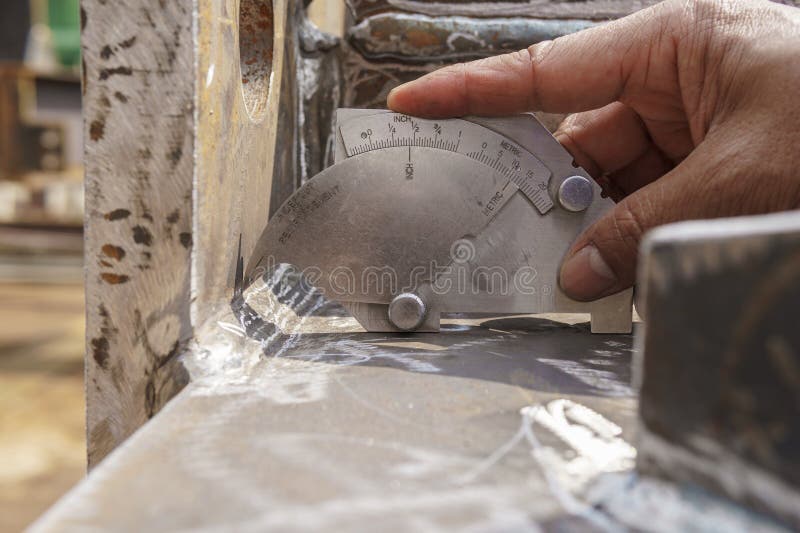How to Achieve Accuracy with Gauge Fillet Welds in Your Tasks
How to Achieve Accuracy with Gauge Fillet Welds in Your Tasks
Blog Article
Exploring the Advantages of Fillet Welding in Construction: Affordable Solutions for Diverse Industries
In the realm of construction, the usage of fillet welding offers an engaging recommendation for sectors looking for economical options without endangering architectural honesty. The advantages of fillet welding extend past simple monetary savings to incorporate improved structural efficiency, convenience throughout diverse industrial applications, and the assurance of exceptional strength and longevity. As we browse with the useful advantages that fillet welding offers, a much deeper understanding arises of exactly how this welding strategy can revolutionize fabrication procedures throughout various industries.

Cost-efficient Solution for Manufacture
Fillet welding acts as a cost-effective service in fabrication processes, offering both effectiveness and durability. This welding technique includes signing up with two items of metal at an angle, developing a triangular cross-section. The simpleness of fillet welding makes it a popular selection in various sectors, consisting of construction, auto, and manufacturing.
Among the crucial advantages of fillet welding is its capability to lower material and labor expenses. By utilizing fillet welds as opposed to other intricate joint layouts, producers can save money on products and production time. Additionally, fillet welding needs very little prep work compared to other welding techniques, further reducing fabrication prices.
Additionally, fillet welds provide outstanding structural toughness, ensuring the durability and resilience of the fabricated elements. The triangular form of the weld distributes tension much more uniformly, decreasing the likelihood of joint failure (Gauge Fillet Weld). This structural integrity not just enhances the general top quality of the finished item yet likewise decreases repair and maintenance prices in the future
Enhanced Architectural Performance With Fillet Welding
Enhancing architectural efficiency via the application of fillet welding strategies is an important element of ensuring ideal performance and longevity in produced frameworks. Fillet welding plays a key function in enhancing structural effectiveness by properly dispersing lots and stresses throughout the welded joints. By producing a smooth transition between the linked parts, fillet welds aid to boost the overall toughness and stability of the framework.
One of the substantial benefits of fillet welding in boosting architectural effectiveness is its ability to join products of varying thicknesses. This adaptability permits the building and construction of light-weight frameworks without jeopardizing on strength. Additionally, the smooth profile of fillet welds lowers stress and anxiety concentrations, which can help protect against premature failure of the bonded joints.
Additionally, fillet welding allows the construction of intricate geometries easily, offering developers with even more flexibility in developing cutting-edge and reliable structures. By enhancing the layout and positioning of fillet welds, engineers can make best use of the architectural performance of made elements, inevitably causing cost financial savings and boosted efficiency in varied industries.
Convenience in Diverse Sector Applications
With its capability to cater to a large range of material densities and geometric intricacies, fillet welding stands as a flexible fabrication method that discovers applications throughout diverse industries. One vital area where fillet welding stands out remains in the manufacturing field, where it is used in the manufacturing of heavy machinery, equipment, and structural components. The automotive industry also benefits from fillet welding, utilizing it in the assembly of automobile frameworks, framework, and other important structures. In the building and construction field, fillet welding plays an important function in joining steel beam of lights, columns, and other architectural aspects. In addition, the aerospace sector depends on fillet welding for the manufacture of airplane components, making sure toughness and resilience in critical parts. Furthermore, the oil and gas market makes use of fillet welding in the construction of pipes, platforms, and tank, where the robust welds offer stability and durability to these structures. In general, the flexibility of fillet welding makes it an essential procedure in different industries, supplying affordable options for you could try these out complicated fabrication read this post here needs.

Superior Toughness and Toughness
Fillet welding plays an important function in attaining these attributes due to its ability to supply substantial strength by distributing lots uniformly throughout the bonded joint. As a result, structures fabricated utilizing fillet welds exhibit boosted resilience and can hold up against considerable mechanical forces without jeopardizing their honesty.
The exceptional toughness and durability used by fillet welding make it an optimal option for applications in sectors such as building, automotive, aerospace, and manufacturing, where architectural stability is paramount. By making use of fillet welds in construction, manufacturers and designers can make sure that their products meet strict high quality and security criteria while optimizing cost-effectiveness and production effectiveness. Fundamentally, the remarkable resilience and long life offered by fillet welding make it a recommended welding strategy for producing durable and durable structures throughout varied markets.
Practical Advantages of Fillet Welding
Offered the shown superior toughness and longevity in bonded joints, the useful benefits of fillet welding prolong past structural stability to encompass effectiveness and cost-effectiveness in fabrication processes. Furthermore, fillet welding permits for have a peek at this site raised efficiency due to its flexibility in signing up with various kinds of thicknesses, products, and shapes. Overall, the functional benefits of fillet welding make it a valuable choice for business seeking efficient and economical options in manufacture.
Verdict
In conclusion, fillet welding offers an affordable option for manufacture, offering boosted structural effectiveness, adaptability in diverse market applications, premium toughness, and sturdiness. The functional benefits of fillet welding make it a preferred selection for different fabrication jobs across various industries. Its capability to effectively join products while preserving structural integrity makes it a useful technique for ensuring top quality and reputable outcomes in welding applications.

In addition, fillet welding needs marginal prep work contrasted to other welding strategies, further decreasing construction prices.

Provided the demonstrated remarkable strength and longevity in bonded joints, the sensible benefits of fillet welding extend beyond architectural honesty to incorporate performance and cost-effectiveness in construction processes - Gauge Fillet Weld.In conclusion, fillet welding provides an affordable option for manufacture, offering improved architectural efficiency, adaptability in diverse sector applications, superior stamina, and longevity
Report this page